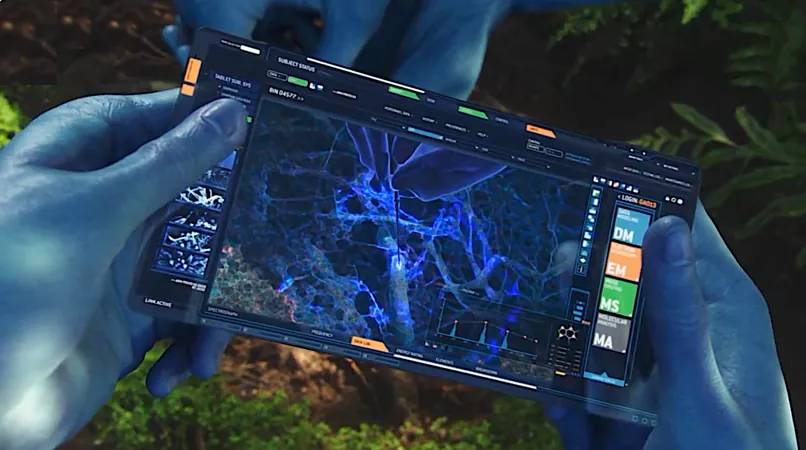
Revolutionary AI Model Decodes the Secret Language of Plants!
2024-12-23
Author: Li
Overview
In a groundbreaking development, a team of researchers from the John Innes Centre and the University of Exeter has unveiled a pioneering Artificial Intelligence model designed to decipher the genetic 'language' of plants. Dubbed Plant RNA-FM, this innovative AI technology stands as the world’s first model of its kind and signifies a remarkable leap forward in understanding plant biology.
The Role of RNA
At the core of this journey is RNA, a molecule fundamental to all living organisms, which plays a critical role in carrying genetic information. Just like DNA, RNA's structure is composed of sequences made up of nucleotides, akin to how words are formed from letters in human languages. This intricate arrangement lends itself to a unique 'grammar' that can be analyzed.
Collaborative Research Efforts
Professor Yiliang Ding and his team at the John Innes Centre have long focused on studying RNA structures. These structures are vital for regulating essential biological functions such as plant growth and responses to environmental stress. To gain deeper insights into RNA's complex language, they partnered with Dr. Ke Li from the University of Exeter, leveraging advanced AI methodologies similar to those used in developing systems like ChatGPT.
Training the Model
Plant RNA-FM was meticulously trained on a massive dataset comprising 54 billion pieces of RNA information from 1,124 different plant species. This extensive training allows the model to recognize and understand the nuances of RNA structures and their functions across the plant kingdom. Researchers explain that, analogous to human language, this AI has mastered the syntax and semantics of RNA sequences, enabling it to make precise predictions about their functionalities.
Implications for Plant Science
The implications are profound. The model has already been used to uncover specific functional RNA structural patterns that influence how genetic information is translated into proteins. 'While RNA sequences may seem random, our AI has decoded the hidden patterns within,' explained Dr. Haopeng Yu, a postdoctoral researcher in the project.
Global Collaboration
This collaborative effort also involved contributions from scientists at Northeast Normal University and the Chinese Academy of Sciences, emphasizing the global engagement in this scientific endeavor.
Future Prospects
As stated by Professor Ding, Plant RNA-FM is only the beginning. The research team aims to employ more advanced AI techniques to unlock further secrets of DNA and RNA languages that exist in nature. This breakthrough holds the potential to transform our approach to crop improvement and the future of AI-driven genetic design.
Addressing Global Challenges
The development comes at a crucial time when scientists are seeking innovative solutions to global challenges like food security and climate resilience. As AI continues to evolve, its application in plant science could pave the way for new strategies to enhance agricultural productivity and sustainability.
Publication and Recognition
This monumental research has been documented in 'An Interpretable RNA Foundation Model for Exploration Functional RNA Motifs in Plants,' published in Nature Machine Intelligence, showcasing a significant advancement in both AI-driven research and agricultural biotechnology.
Conclusion
Stay tuned as this transformative journey unfolds, potentially reshaping how we understand and interact with the natural world!


 Brasil (PT)
Brasil (PT)
 Canada (EN)
Canada (EN)
 Chile (ES)
Chile (ES)
 España (ES)
España (ES)
 France (FR)
France (FR)
 Hong Kong (EN)
Hong Kong (EN)
 Italia (IT)
Italia (IT)
 日本 (JA)
日本 (JA)
 Magyarország (HU)
Magyarország (HU)
 Norge (NO)
Norge (NO)
 Polska (PL)
Polska (PL)
 Schweiz (DE)
Schweiz (DE)
 Singapore (EN)
Singapore (EN)
 Sverige (SV)
Sverige (SV)
 Suomi (FI)
Suomi (FI)
 Türkiye (TR)
Türkiye (TR)